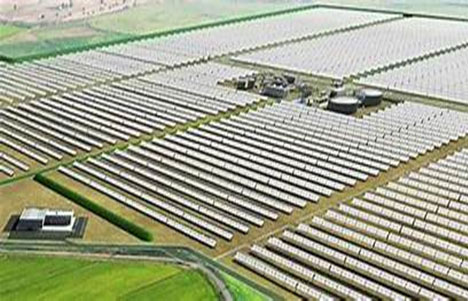

Over the next several decades, energy investments will experience the largest increase in the history of the world... literally trillions of dollars. The increase in investment is part of a natural cycle in which science, business, and government work towards creating, developing and financing technologies which are aimed at meeting the demand for energy. Precisely how current and future energy needs are to be met is being debated not only on a daily basis in print and electronic media, but also in unprecedented meetings of national and local legislative bodies and among world leaders. Underlying these discussions are crucial economic decisions that affect the employment prospects of almost everyone on the planet.
Shortly after the founding of the California Energy Investment Center (CEIC) in August 2009, a front-cover story in Time Magazine, "Why California is still America's Future" (November 2, 2009) touted California as leading the U.S. and the world in the development and application of energy-related technologies. There is no doubt that California is well-known as a hotbed of innovative energy technologies, but what is not generally understood is the number of companies and new jobs this research and development is creating, The multitude of entities engaged in clean energy range from those that have made their mark in microchips, software, and the Web, to those that spark California's leadership in energy patent registrations, and those who are applying new ideas along a spectrum of biomass, efficient oil extraction, solar power, wind, water recovery, geothermal and other energy generation. The CEIC’s mission was to position itself to identify innovative projects which need capital to create sustainable jobs.
The western U.S. states can be a focal point for U.S. energy development, and California can serve as a bridge between fossil fuel and alternative energy production because California has one of the largest oil reserves (Texas, Alaska and Louisiana being the others). Ironically, alternative energy as a focal point for future energy development has its roots in two oil-related events: the Unocal blowout in 1969 and the Exxon Valdez spill in 1989. These events imprinted a direct connection between dependence on oil and environmental protection. Nowhere has been the tension between fossil fuel and alternative energy been felt more than in California, and the result has been a virtual cascade of technological innovation. Venture capitalists, universities, and businesses have raised the profile of alternative energy to unprecedented levels.
In terms of worldwide employment in the energy industry, oil predominates and will continue to occupy a dominant position on the world economic stage. However, things are definitely changing. Even the nature of jobs within the oil industry is changing with more capital being invested in new cleaner more efficient methods for oil and natural gas extraction. By 2030, even though oil and gas employment growth rates will be about the same, the biggest growth in jobs will be in alternative energy and, ironically, in coal. To put the situation into perspective, in terms of the energy supply necessary to meet demand, in twenty years the output of three (3) Saudi Arabia will be needed in order to meet demand.
For the next several decades, smaller companies with unique ideas will provide the risk capital and management which will establish the viability and profitability of alternative energy. With the exception of Conoco Phillips, the basic business model of the large oil companies has not changed from a focus on oil production and refinement, and from a reading of company mission statements this is not likely to change appreciably in the next five years. The large producers will likely try to develop oil reserves from deepwater drilling, heavy oil, oil shale, and nonconventional oil extraction means, including from old wells. However, within a decade, the major oil firms will be in a transition which will, eventually, lead them to diversify through acquiring many of the alternative energy firms that are currently in the development stage. To Big Oil, alternative energy represents a hedge on future oil supply and a politically prudent future path.
Therefore, the CEIC’s 2020 Plan is to view alternative energy investment as integral to a national energy diversification scenario, i.e., as adding renewable energy to existing oil, gas, and coal. The best resources and strategies in this diversification approach involve efficient oil extraction (a relatively small step in terms of adapting existing core competencies within the oil industry), solar power generation (due to plentiful sunlight and government support and mandates) and biomass (due to abundant agricultural and other wastes). All of these technologies have the advantages of scalability and relatively easy deployment. With the exception of firms which have large scale solar projects in the planning stage, CEIC views virtually all of the jobs created by alternative energy projects to come from small businesses.
The link between a developing alternative energy subsector and sustainable job creation has a parallel in the development of the information technology (IT) industry whose worldwide growth was and is part of the California success story. CEIC foresees a 50% growth rate in application of alternative energy technology -- about the same rate at which information technologies were developed and deployed. However, alternative energy, even with government mandated fuel supports, will meet only about 10-15% of the worldwide energy needs over the next two decades. To some, alternative energy is still a fad; that view is a mistake. Powerful political, social and economic forces have shaped alternative energy into a very strong trend with decades of steady growth in the future.
Moreover, in less than two decades, based upon projected growth in alternative energy, more efficient oil and natural gas extraction, the availability of huge coal reserves and clean-coal technologies, the U.S. will shift from being an energy dependent nation to becoming a net exporter of energy, and related energy products and services. It should be remembered that the U.S. is currently the third largest energy resource producer in the world behind only Russia and Saudi Arabia, and just ahead of Iran, China, and Venezuela. Europe and Japan are major users of energy and low on the list of energy producers; therefore, they are likely to purchase a variety of U.S. fuels and related technologies, including those derived from coal, solar, biomass conversion, wind, and geothermal. Jobs are also likely to be created from the development of both the hardware and software relating to alternative energy technologies.
In establishing the California Energy Investment Center, we will be selecting our projects based upon the relative readiness of the companies to take advantage of the economic, regulatory, and investment trends. Job creation is not only a high priority for these project companies, but is also mandated by our approval agency, the U.S. Citizenship and Immigration Service. Energy is a necessity for virtually every human endeavor. Although the case for alternative energy is strong, this is also a complex sector involving unprecedented elements of size and scale. The minimum mandated holding period for CEIC project investors is five years, and we emphasize patience as the forces of technology, environment, and economics mature.

AE Advanced Fuels
Location: Stanislaus, California
Total Spending: $150 Million
EB-5 Investment: $36 Million
Total EB-5 Jobs: 796

Next Era Genesis Solar – 280 MW; 1726 acres
Location: Riverside, California
Total Spending: $1 Billion
EB-5 Investment: $100 Million
Total EB-5 Jobs: 3,494